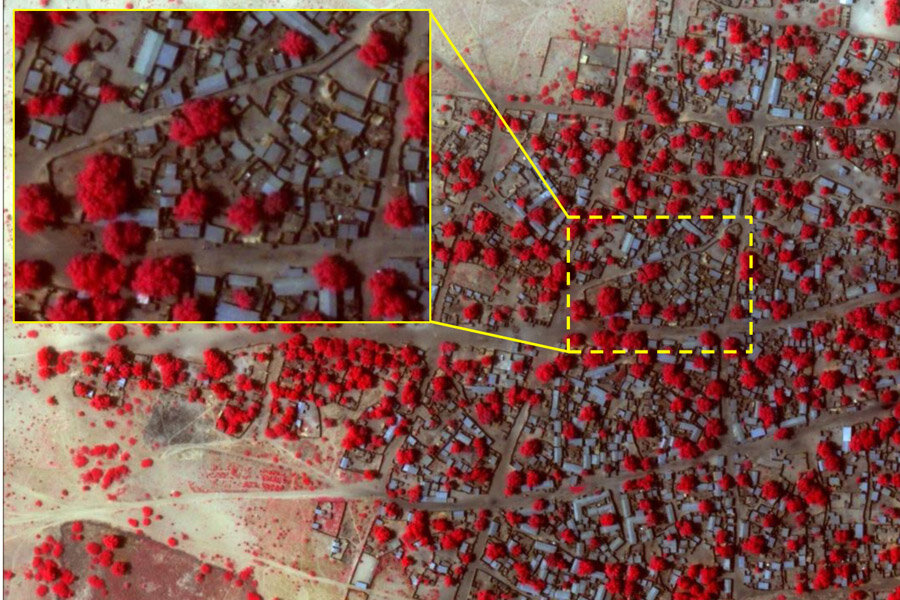Boko Haram: Satellite images point to scorched-earth rampage
A daily roundup of terrorism and security issues.
Just weeks ahead of national elections, Islamist group Boko Haram has upped the frequency and brutality of attacks in northeastern Nigeria, with recent satellite images showing entire towns razed.
An attack on the border town of Baga began on Jan. 3 when Boko Haram fighters, who seek to impose Islamic rule in northern Nigeria, overran a military base, the Financial Times reports.
“Of all Boko Haram assaults analyzed…this is the largest and most destructive yet,” with homes, clinics, and schools destroyed, said Daniel Eyre, Nigeria researcher at Amnesty International, which released the satellite images.
The estimated death toll from Baga varies widely: The government cited 150 casualties there, but Amnesty International placed the murder count closer to 2,000 after interviews with witnesses, reports the BBC. Nigeria has often been accused of underestimating casualty figures to downplay the threat of the Islamist group. Some 620 structures were reportedly destroyed in Baga, and more than 3,100 were razed in neighboring Doro Baga.
The insurgency began in 2009, but the scale and brutality of Boko Haram’s attacks have risen sharply since the government imposed emergency rule in three worst-hit states in northern Nigeria last year, Reuters reports.
Reliable and timely information on Boko Haram attacks is difficult to obtain. The group often disables cellular towers and cuts off communication, while the unpredictable violence deters journalists and international aid workers from reaching affected towns and villages, ABC news reports.
The group has increasingly turned to brutal tactics like the use of children as suicide bombers, NBC News reports. "It is highly likely that Boko Haram is conscripting young girls to use as suicide bombers," said Elizabeth Donnelly, assistant head of the Africa program at London's Chatham House. This possible includes some of the more than 200 girls abducted in Chibok last April.
Boko Haram now controls at least 10 percent of Nigerian territory, reports The Associated Press. That’s roughly the size of Belgium.
Since August, when the insurgents declared they were recreating an ancient Islamic caliphate that included parts of Cameroon, Chad and Niger, they have seized or consolidated control of more than 10 percent of Nigerian territory, mostly in the state of Borno where the group was created. In Borno, Boko Haram holds 14 of the 27 local government areas including all the border crossings into Niger, Chad and Cameroon….
While there is little likelihood of Boko Haram overrunning Nigeria, many worry that the group's hostility to democracy will increase attacks around the elections. Nigerian troops have been unable to snuff out the insurgency despite a pledge by top commander last year to do so in a three-month span.
US State Department spokeswoman Marie Harf said Boko Haram has used events such as elections to stir up tensions in the past. The Feb. 14 election is expected to be a tight race between President Goodluck Jonathan and leading challenger Muhammadu Buhari, Reuters reports.







